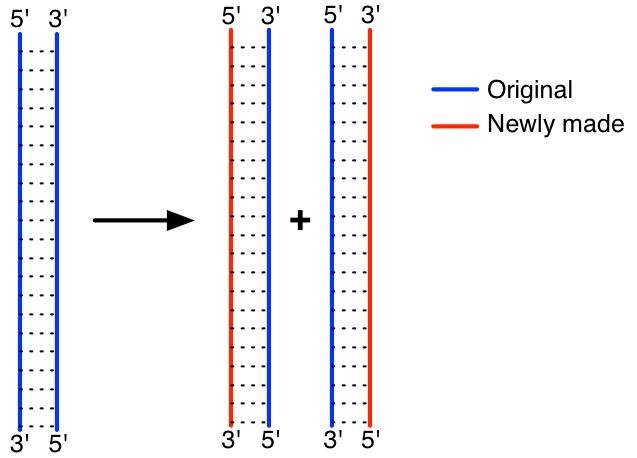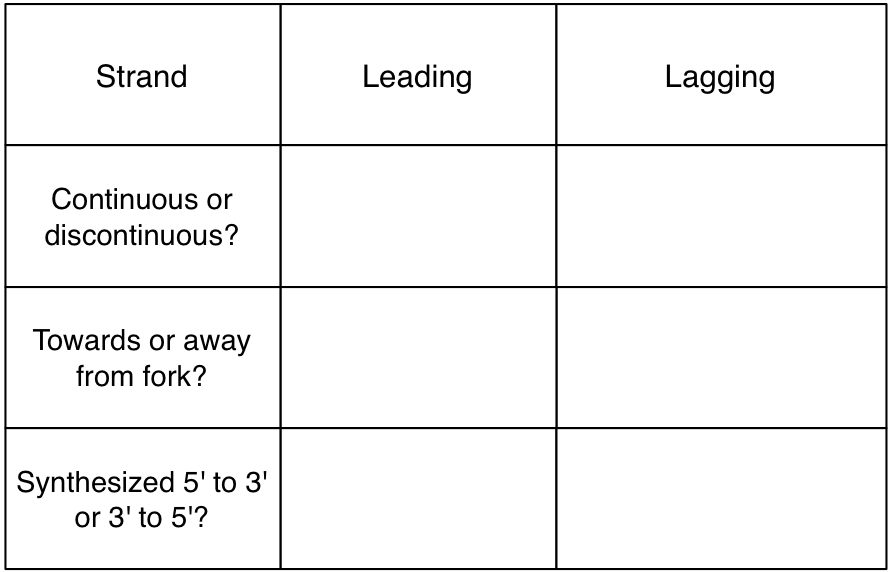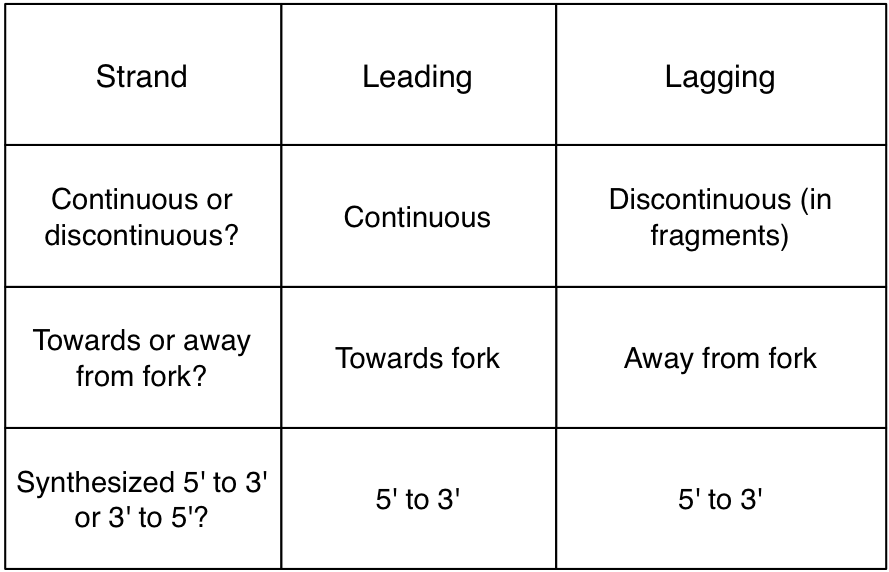- DNA polymerases
- Principles of replication
- Enzymes involved in replication
- Replicating the lagging strand
- Replicating the bacterial chromosome
1. Before you start this topic, you need to understand the structure of dsDNA.
2. The information you need to study this section is in the section on DNA replication in your textbook (page 210). You should also study the relevant notes you took during lecture. There are 5 principles of replication we discussed in lecture.
3. Cells need to know where to start replicating DNA. You can imagine several different scenarios - for example, replication could start at a random point, or a specific point; it could start in one part of the DNA or simultaneously in different parts of the molecule. After you have studied this material, you should be able to answer the following questions:
- How is the replication of DNA started - at random or in specific locations?
- What do we call a location in DNA where replication starts?
- How does the replication machinery recognize locations in DNA where replication can be started?
- How does the size of DNA molecules influence the amount of locations where replication can be initiated?
4. The replication of DNA involves the formation of a special structure called the replication fork. Study material relevant to the replication fork in your textbook and your notes. After you have reviewed that material, you should be able to answer the following questions:
- What happens to the dsDNA at the replication fork?
- List enzymes that are involved in the formation of the replication fork and their functions.
- Can you draw a diagram of a replication fork and label the enzymes involved in its production and maintenance?
- What is the difference between unidirectional and bidirectional replication?
5. When DNA is replicated, a cell must make two exact copies of its dsDNA. There are several ways in which this could be achieved. We now know that cells replicate their DNA in a semiconservative way. Once you have studied this material, you should be able to answer the following questions:
- What is meant by semiconservative DNA replication?
- Why can a cell use a single DNA strand to reconstruct the original dsDNA, to which that single strand belonged?
- Draw a schematic of the semi-conservative replication of DNA. On your schematic, clearly label the original dsDNA, and the new dsDNA molecules and their directions. Also, make sure to label what parts of the new dsDNA molecules come from the original dsDNA that is being replicated and what parts are synthesized during the replication process! Once you have completed your check it by mousing HERE. If you mislabeled your diagram, review the material and try to draw it again.

6. In the replication fork, the two DNA strands are replicated in a slightly different way. We refer to them as the leading and the lagging strand. On a separate piece of paper, fill in the following table. Check your table by mousing over the word ANSWER below the table.

ANSWER

7. Now that you know the principles of replication, you should be able to look at any DNA replication fork and figure out which strand will be leading, and which lagging. Below are two DNA replication forks. All I have given you is the 5' or 3' end of one of the DNA strands. Based on that, you should be able to figure out the directions of the original DNA strands, the directions of the newly synthesized strands and which one will be lagging/leading. Copy those forks on a piece of paper and draw the newly synthesized strands, using a solid line for the leading one and a dashed line for the lagging one. Make sure to add arrows that indicate the directions of the strands. Label the 5' and 3' ends of all strands. Check your drawing by mousing over the word ANSWER below.

ANSWER

8. If you feel that you have mastered the concepts on this page, you can move to the next topic, which discusses the enzymes involved in DNA replication.